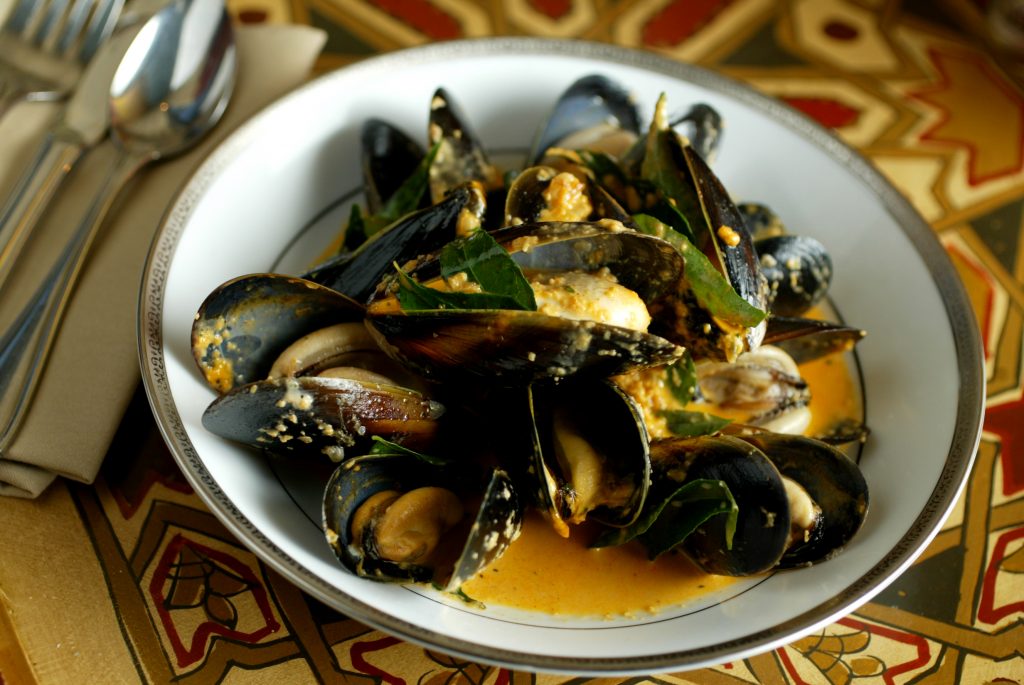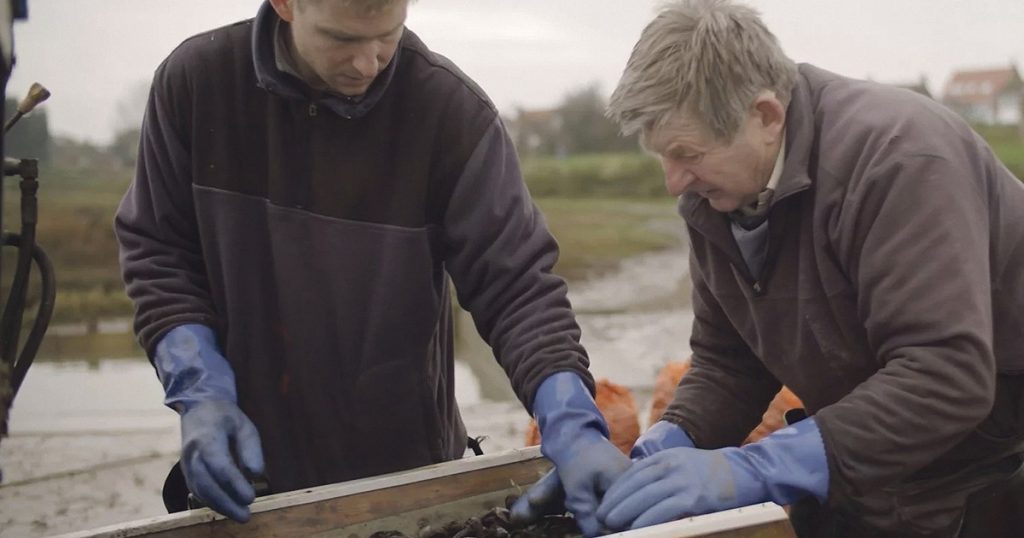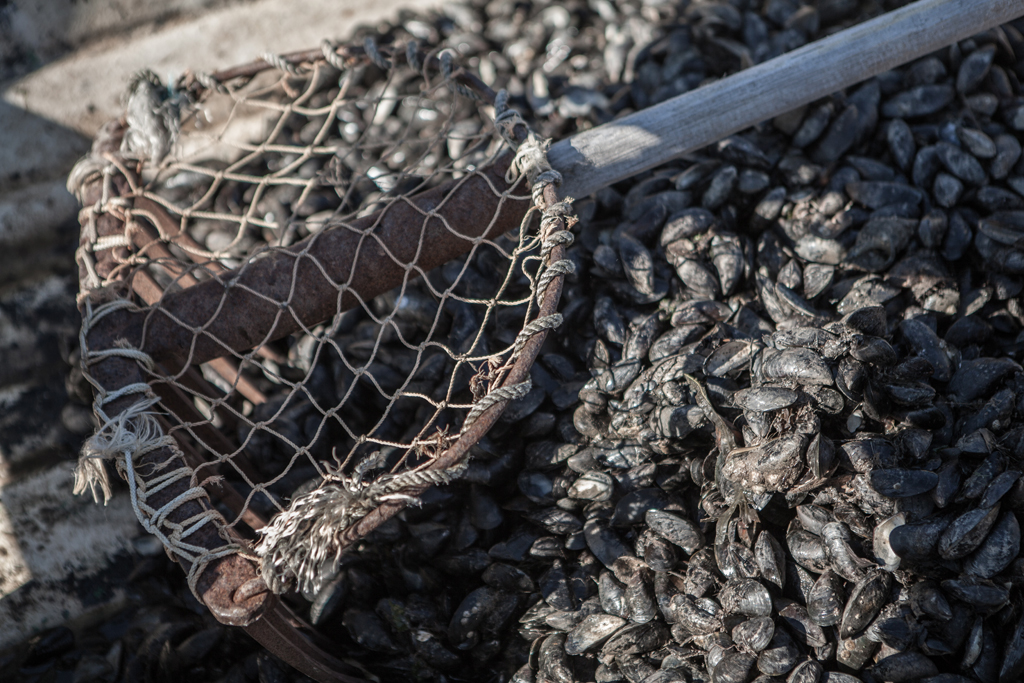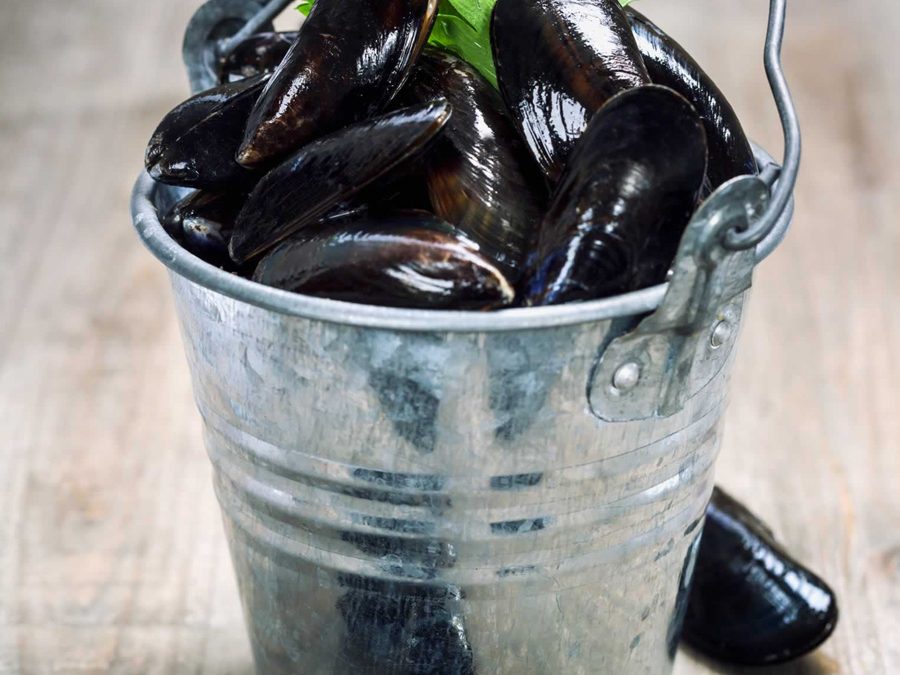If there’s one ingredient forever associated with our stretch of the North Norfolk coast, it’s glossy, plump mussels. These gorgeous, fresh-as-you-like bivalves are coming into abundant season right now. As a rough rule of thumb is any month with an R is when they’re at their best. Not only are mussels really tasty, they are also a great source of lean protein and full of nutrients due to being rich in minerals and vitamins. Norfolk Blue or Common mussels, particularly those from Brancaster, are big juicy morsels of succulent flesh (the orange ones are female, male ones are more yellow).

Until the 1990’s, most local mussels left the county and headed off to industrial cities like Nottingham or Leicester. “They were a working man’s pleasure,” says local Brancaster Fisherman Cyril Southerland, and as the day ended, factory workers grabbed bags from market stalls to take home for dinner. But then, chefs along the Norfolk coast became interested in making the most of what they could get locally. And word spread that this quiet English county had some amazing food on the menu.
These bed-grown Norfolk mussels are distinct from industrially produced rope-grown mussels that spend their life constantly suspended deep in the water column. Because they live most of their lives right where the land meets the sea, Norfolk mussels drink up high tide and dry out in low. They adapt to the ebb and flow and have a hearty character that gives them a slightly longer shelf life once harvested. Brancaster harbour’s creeks and channels offer the ideal conditions needed for growing oysters and mussels. The mussels are laid down in the channels as seeds and over a period of 2 years they are nurtured until they are ready for harvesting.
Then when it’s time for harvesting, “it’s all done in the same way it was in my great grandfather’s time,” says Cyril. While rope-grown mussels are mechanically harvested Norfolk mussels are raked from the shallow waters in the same way as centuries ago.

There is a common misconception about mussels in that if they don’t open whilst cooking they should be discarded as unsafe. This myth is believed to have been first published by the food writer Jane Grigson in her 1973 ‘Fish Book’ which advises readers to ‘throw away any mussels that refuse to open’ . Nick Ruello got involved in this mussel myth because he was commissioned to write a report for Seafood Services Australia, on the rather specific topic of adding value to mussels. And of course, along the way, he cooked and ate over 30 batches of mussels, of various sizes, ranging from 21 to 111 mussels.
Now the mussel has a shell with two halves. Thanks to some elastic ligaments, these two halves have a natural tendency to be open. To keep them closed, the mussel has muscles. It uses its specific adductor muscles. When we cook them, the heat can have a few effects on the adductor muscles that keep the two halves of their shells stuck together. Sometimes, the heat can denature the proteins in the adductor muscles so that they simply disintegrate, or sometimes, it can make one or both ends of the adductor muscles come unstuck from the shell. Nick Ruello found that 1.9 per cent of mussels opened early. These mussels opened before they had been cooked long enough to kill any potential pathogens in them.
If you removed them from the stove once they opened and ate these mussels, you would be at risk of food poisoning. But you would get a strong hint from the texture of the meat — it would be unappetizing, jelly-like, un-coagulated, and stuck to the perimeter of the shell. At the other extreme, he found that some 11.5 per cent of mussels remained closed after a so-called “normal” cooking time. When he forced them open with a knife, every single one was both adequately cooked and safe to eat. So, according to Nick Ruello, even if the adductor muscles refuse to bow to the heat, the meat is still safe to eat.

.
To get them at their freshest take a drive on the A149 coast road in north Norfolk – you’ll find fishermen selling them directly at Brancaster and there are a number of good outlets too, such as The Fish Shed at Brancaster Staithe, Gurneys Fish Shop near Anna’s at Thornham and Westons Fish Shop at Blakeney. Otherwise pop into pretty much any good pub in north Norfolk and they’ll be on the menu when in season.
For information about Brancaster Mussel Fest held in Brancaster Staithe then go here

